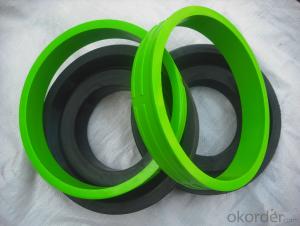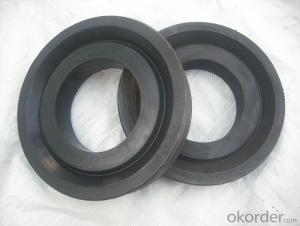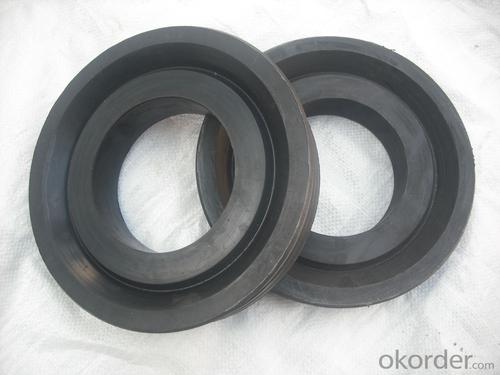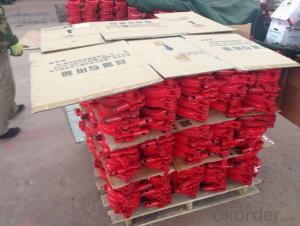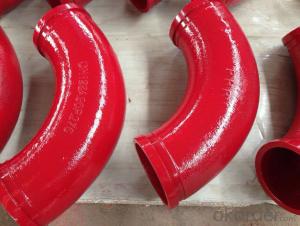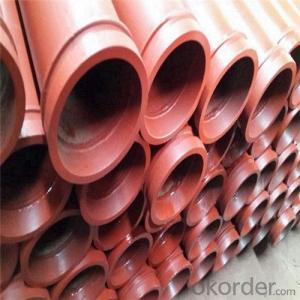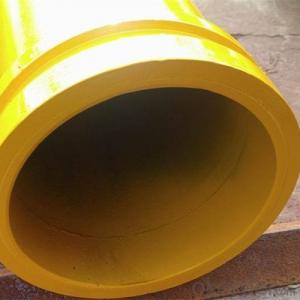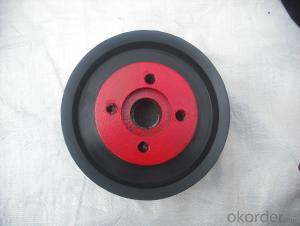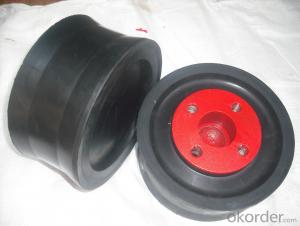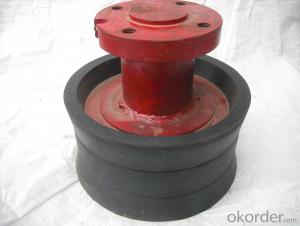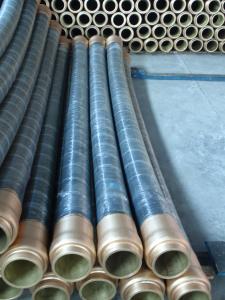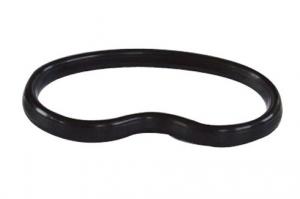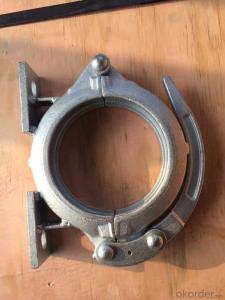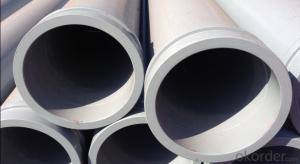ZOOMLION RUBBER PISTON WITH FIBER DN230 WITH HIGH QUALITY
- Loading Port:
- Tianjin
- Payment Terms:
- TT OR LC
- Min Order Qty:
- 3 set
- Supply Capability:
- 500 set/month
OKorder Service Pledge
OKorder Financial Service
You Might Also Like
ZOOMLION RUBBER PISTON WITH FIBER DN230
Schwing/ Sany/PM/Zoomlion concrete pump rubber piston
name | Concrete pump piston |
size | DN200 for Schwing DN230 for Schwing DN200 for PM entirety piston DN230 for PM entirety piston DN180 for Zoomlion piston DN200 for Zoomlion piston DN220 for Zoomlion piston DN230 for Zoomlion piston DN180 for Sany piston DN195 for Sany piston DN200 for Sany piston DN230 for Sany piston DN260 for Sany piston DN280 for Sany piston Other sizes and types upon request |
Material | PUR Polyurethane,natural rubber |
Applacation | Used in concrete pump truck,concrete pump,Hydrulic ram system in Construction work equipment
|
Serving brands of mounted truck concrete pump and concrete pump | Sany ,PM, Zoomlion,Schwing,CIFA and so on |
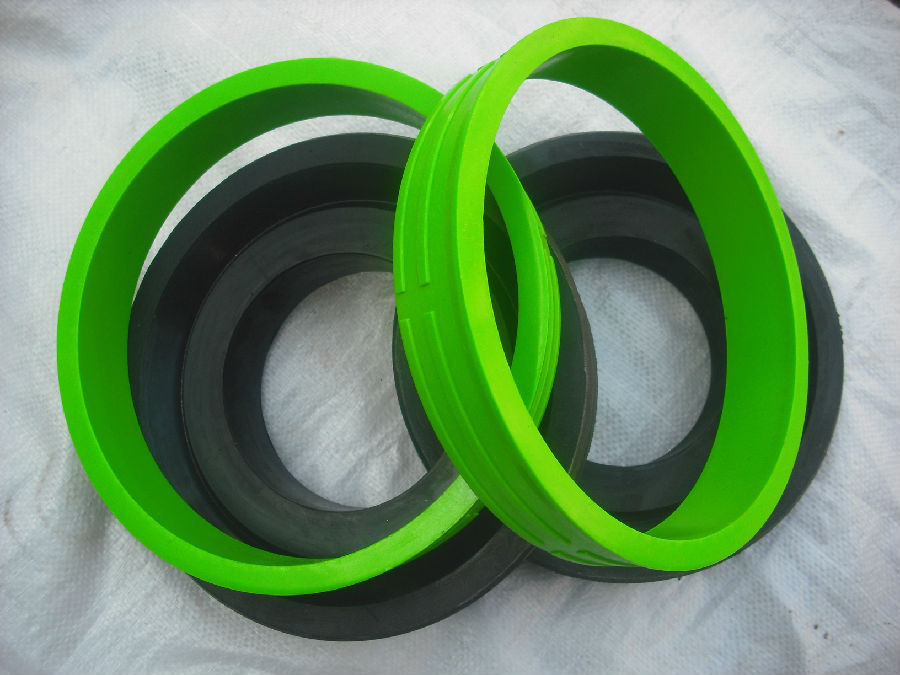
- Q: What is the concrete delivery pump?
- Currently mainly divided into gate valve, concrete pump and S valve concrete pump
- Q: How often should concrete pump pistons be replaced?
- The frequency of replacing concrete pump pistons can vary depending on several factors such as the type of pump, the quality of the pistons, and the intensity of usage. However, as a general guideline, concrete pump pistons should be inspected regularly and replaced whenever signs of excessive wear or damage are observed. Timely replacement is crucial to ensure optimal pumping performance and prevent potential breakdowns.
- Q: How often should concrete pump seals be replaced?
- Concrete pump seals should be replaced every 500 to 800 hours of operation or whenever signs of wear, leakage, or decreased performance are observed.
- Q: What is the function of a concrete pump hopper filter?
- The function of a concrete pump hopper filter is to prevent large debris and foreign objects from entering the pump system, ensuring smooth and uninterrupted flow of concrete and protecting the pump from potential damage.
- Q: How do I properly adjust and control flow rates in concrete pump spare parts?
- To properly adjust and control flow rates in concrete pump spare parts, you should start by examining the pump's manual and understanding its specific settings and controls. It's important to ensure that all valves and levers are in the correct position and functioning properly. Additionally, you can adjust the flow rate by manipulating the stroke length and speed of the pump. Experimenting with these settings while monitoring the flow rate will help you achieve the desired results. Regular maintenance and cleaning of the pump parts are also crucial to ensure smooth flow control.
- Q: What is the purpose of a concrete pump accumulator?
- The concrete pump accumulator serves the purpose of storing energy and ensuring a continuous and uniform flow of concrete while pumping. It acts as a intermediary between the pump and the delivery line, guaranteeing a smooth and uninterrupted delivery of concrete. The accumulator functions by compressing air or nitrogen, which is then utilized to propel the concrete through the pipeline when the pump is not actively operating. This aids in maintaining pressure and preventing any obstructions or irregularities in the flow of concrete. Additionally, the accumulator can reduce the wear and tear on the pump by absorbing pressure fluctuations and providing a more controlled and consistent flow of concrete. In summary, the concrete pump accumulator aims to enhance the efficiency, reliability, and performance of the pumping process.
- Q: Can I use alternative materials for concrete pump spare parts?
- Using alternative materials for concrete pump spare parts is indeed possible. Nevertheless, it is crucial to carefully assess the specific requirements and performance characteristics of the parts prior to making any substitutions. Concrete pump spare parts are engineered to endure high pressures and abrasive materials, hence it is imperative to opt for alternative materials that can withstand these conditions. To guarantee that the chosen alternative materials do not compromise the concrete pump's performance or safety, it is advisable to seek guidance from the manufacturer or a professional in the field.
- Q: How to choose concrete pump?
- In order to ensure that the concrete pump has a larger amount of transportation, but also has a certain outlet pressure and the corresponding economic power, in the design of concrete pump, most of the constant power piston pump is used
- Q: Can concrete pump spare parts be imported from other countries?
- Yes, concrete pump spare parts can be imported from other countries. Many manufacturers and suppliers of concrete pump spare parts have a global presence and offer international shipping options. Importing concrete pump spare parts from other countries can provide access to a wider range of products, competitive pricing, and high-quality components. However, it is important to consider factors such as import regulations, customs duties, and shipping costs when importing concrete pump spare parts from other countries.
- Q: What are the common causes of overheating in concrete pump spare parts?
- Concrete pump spare parts can overheat due to various common causes. One primary reason is improper lubrication, which results in increased friction and overheating of the pump's moving parts like bearings and pistons. To prevent this, it is essential to regularly inspect and maintain the lubrication system to ensure smooth operation. Excessive use or continuous operation without breaks is another common cause of overheating. Concrete pumps have a designated workload, and surpassing it or neglecting proper rest periods can lead to overheating of the components. To avoid this, it is crucial to adhere to recommended operating guidelines and periodically allow the pump to cool down. Additionally, overheating can occur due to clogged or blocked cooling systems. The cooling system in a concrete pump regulates temperature by circulating coolant around vital parts. If the system gets clogged or the coolant level is insufficient, overheating may occur. Regular inspection, cleaning, and maintaining appropriate coolant levels can prevent this issue. Inadequate ventilation is also a common cause of overheating. Concrete pumps generate substantial heat during operation, and if the surrounding environment lacks proper airflow, the heat cannot dissipate effectively. This can lead to overheating of spare parts. To avoid this, it is important to operate the pump in well-ventilated areas or utilize additional cooling measures like fans or air conditioning. Lastly, a malfunctioning or damaged pump component can cause overheating. When a part such as the motor or hydraulic system does not function correctly, it places additional strain on other components, resulting in overheating. Regular maintenance and inspection of the pump's components can help identify and address any potential issues before they lead to overheating. In conclusion, preventing overheating in concrete pump spare parts requires proper lubrication, adherence to operating guidelines, maintenance of cooling systems, ensuring adequate ventilation, and regular component inspection.
Send your message to us
ZOOMLION RUBBER PISTON WITH FIBER DN230 WITH HIGH QUALITY
- Loading Port:
- Tianjin
- Payment Terms:
- TT OR LC
- Min Order Qty:
- 3 set
- Supply Capability:
- 500 set/month
OKorder Service Pledge
OKorder Financial Service
Similar products
Hot products
Hot Searches
Related keywords
